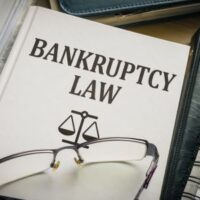Quick Information About Bankruptcy Schedules

Whether you are planning to file for bankruptcy or you are simply seeking additional information about the bankruptcy process, it is essential to learn more about the type of information that you will be required to supply to the bankruptcy court in addition to your initial bankruptcy petition. One important set of documents that you must file are “schedules.” There are 10 separate schedules that are relevant to debtors filing for Chapter 7, Chapter 11, and Chapter 13 bankruptcy, and they are identified by letter. In other words, bankruptcy schedules start with “Schedule A” and go through Schedule J.” Each schedule is designed to provide the court with a different type of financial information about the debtor, and many schedules will ultimately be more than just a single sheet.
Once you complete all required schedules, you will need to total amounts from different schedules to provide a clear picture of assets and liabilities for the bankruptcy court. What type of information needs to be included in each schedule? Our bankruptcy attorneys in West Palm Beach can provide you with a summary of each schedule.
Schedule A
All real property should be detailed in Schedule A, including information about the value of any real property assets.
Schedule B
Schedule B is where you will list all personal property you own, including the value of all personal property. This schedule includes both tangible property (such as a motor vehicle and furniture) as well as intangible property (such as bank accounts and pensions).
Schedule C
Here, in Schedule C, you will identify all property you are claiming as exempt. Be sure to work with an attorney to identify Florida exemptions that are relevant to you.
Schedule D
Schedule D is where you will identify all creditors holding secured claims. These are assets for which you owe a creditor where the creditor has a secured interest in the property (meaning that the creditor could repossess the property associated with the debt). Examples include a car loan or a mortgage.
Schedule E
Schedule E is for creditors holding unsecured priority claims.
Schedule F
Schedule F is for creditors holding unsecured nonpriority claims.
Schedule G
This schedule is for identifying executory contracts and unexpired leases, if relevant to your case.
Schedule H
Schedule H is where you will identify codebtors.
Schedule I
In Schedule I, debtors must list their current incomes. For married couples filing jointly, the current income of each individual debtor should be clarified.
Schedule J
Schedule J is for current expenditures of the individual debtors.
Contact Our West Palm Beach Bankruptcy Attorneys
Identifying and understanding all of the schedules, documents, attachments, filings, and other materials that are required in a bankruptcy case can be extremely difficult and complicated for many debtors. Our experienced West Palm Beach bankruptcy attorneys at Kelley Kaplan & Eller know how frustrating it can be to try to determine all bankruptcy requirements on your own, and we want to emphasize that our firm is here to assist you. We have years of experience representing clients in South Florida, and we can begin working with you today on your bankruptcy case.
Sources:
law.cornell.edu/uscode/text/11
uscourts.gov/sites/default/files/b_6_summary_0.pdf



